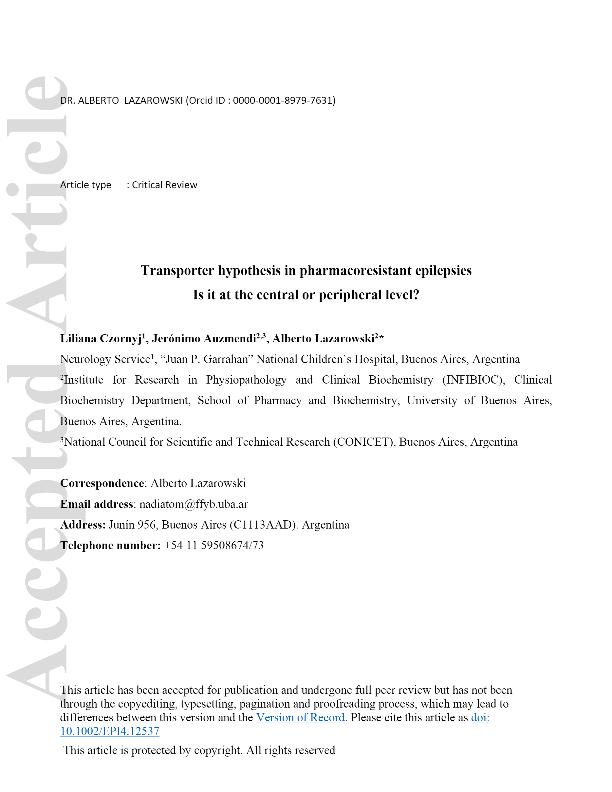Artículo
Transporter hypothesis in pharmacoresistant epilepsies Is it at the central or peripheral level?
Fecha de publicación:
09/2021
Editorial:
John Wiley & Sons Inc.
Revista:
Epilepsia Open
ISSN:
2470-9239
Idioma:
Inglés
Tipo de recurso:
Artículo publicado
Clasificación temática:
Resumen
The multidrug resistance (MDR) phenotype is typically observed in patients with refractory epilepsy (RE) whose seizures are not controlled despite receiving several combinations of more than two antiseizure medications (ASMs) directed against different ion channels or neurotransmitter receptors. Since the use of bromide in 1860, more than 20 ASMs have been developed; however, historically ~30% of cases of RE with MDR phenotype remains unchanged. Irrespective of metabolic biotransformation, the biodistribution of ASMs and their metabolites depends on the functional expression of some ATP-binding cassette transporters (ABC-t) in different organs, such as the blood-brain barrier (BBB), bowel, liver, and kidney, among others. ABC-t, such as P-glycoprotein (P-gp), multidrug resistance-associated protein (MRP-1), and breast cancer-resistance protein (BCRP), are mainly expressed in excretory organs and play a critical role in the pharmacokinetics of all drugs. The transporter hypothesis can explain pharmacoresistance to a broad spectrum of ASMs, even when administered simultaneously. Since ABC-t expression can be induced by hypoxia, inflammation, or seizures, a high frequency of uncontrolled seizures increases the risk of RE. These stimuli can induce ABC-t expression in excretory organs and in previously non-expressing (electrically responsive) cells, such as neurons or cardiomyocytes. In this regard, an alternative mechanism to the classical pumping function of P-gp indicates that P-gp activity can also produce a significant reduction in resting membrane potential (ΔΨ0 = -60 to -10 mV). P-gp expression in neurons and cardiomyocytes can produce membrane depolarization and participate in epileptogenesis, heart failure, and sudden unexpected death in epilepsy. On this basis, ABC-t play a peripheral role in controlling the pharmacokinetics of ASMs and their access to the brain and act at a central level, favoring neuronal depolarization by mechanisms independent of ion channels or neurotransmitters that current ASMs cannot control.
Archivos asociados
Licencia
Identificadores
Colecciones
Articulos(OCA HOUSSAY)
Articulos de OFICINA DE COORDINACION ADMINISTRATIVA HOUSSAY
Articulos de OFICINA DE COORDINACION ADMINISTRATIVA HOUSSAY
Citación
Czornyj, Liliana; Auzmendi, Jerónimo Andrés; Lazarowski, Alberto Jorge; Transporter hypothesis in pharmacoresistant epilepsies Is it at the central or peripheral level?; John Wiley & Sons Inc.; Epilepsia Open; 9-2021; 1-34
Compartir
Altmétricas




